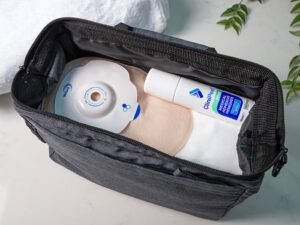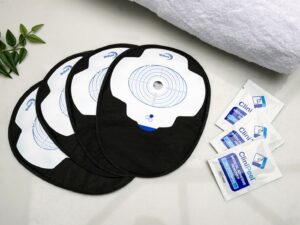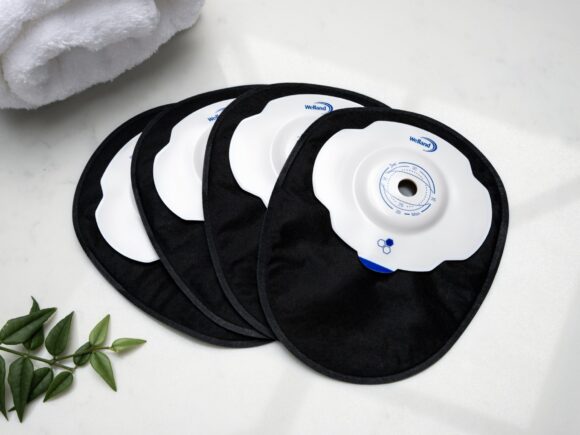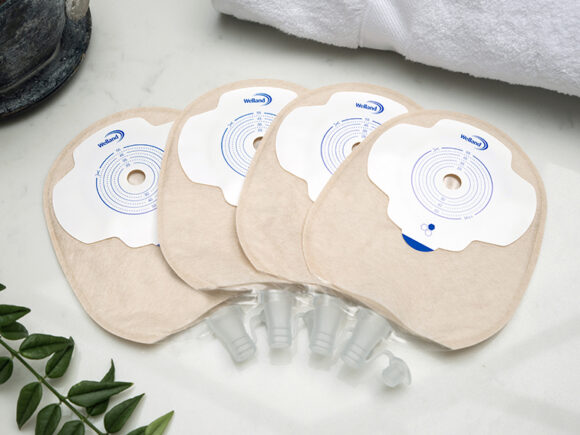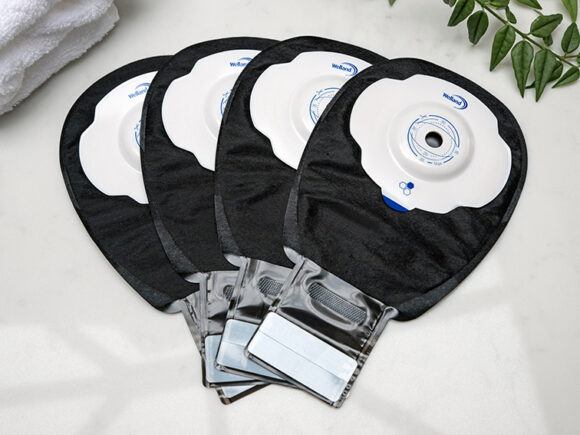Discover tips and advice on managing leaks, reducing anxiety around sleeping with a stoma, and creating routines for a restful sleep.
Many ostomates experience trouble falling asleep, or staying asleep, particularly in the first few weeks after surgery. One very common sleep disruptor is anxiety – related to stoma bag leaks or the stoma bag coming off during the night.
Typically speaking, adults need around 7–9 hour of sleep per night but this does vary from person to person. If you are having significantly less sleep for a long period of time, it is important to pinpoint why.
Learn how your night-time routine, stoma pouch, pouch fit and even your sleeping position can contribute to a restful night’s sleep. Plus get advice from Dr Zainab Noor, Clinical Psychologist in her article on managing sleep disruptions after stoma surgery.
Managing stoma leaks
A stoma bag leak can happen occasionally. If you are experiencing regular stoma leaks, speak to your Stoma Care Nurse who can help establish the problem and provide potential solutions. There are many options out there to keep leaks at bay!
There are various reasons a leak may happen, including an incorrectly-fitted pouch, wind, your sleeping position or high output. In this section, we will share our advice for minimising the risk of stoma leaks and how stoma accessories can help.
Monitor stoma output
Your stoma output can impact your sleep, and the quality of sleep you experience – especially if you have a high output stoma or liquid output.
Here are some ways you can help minimise disruption from your output:
Have your main meal earlier in the evening (3–4 hours before bed).
Empty your stoma bag before going to bed.
Try to limit foods that can cause wind.
Opt for lighter snacks if you’re hungry at night.

Make sure your stoma bag is right for you
Stomas come in all shapes and sizes, and so do stoma bags. Your stoma itself can even change in size over time. It is really important to measure your stoma regularly to ensure the hole in your stoma bag is cut to the correct size.
A stoma bag with an opening cut to the correct size will provide a more secure seal around your stoma. This will help to reduce the chance of leaks and maintain the health of the surrounding skin.
If you do notice leaks, we recommend checking the hole on your pouch – a good night’s sleep could be as simple as cutting your pouch to a new size! Another thing you could try is using a stoma bag with a higher capacity.
However, if you’re pretty confident your pouch is the right size, it may be a good idea to explore stoma bag options. At CliniMed, our Aura® Plus stoma bag range includes a soft convex bag that gently brings the stoma out into the pouch, reducing the risk of leaks.
Your Stoma Care Nurse can help you explore available stoma bags and what may work for you. You can also request samples of any of our stoma bags for free.
How stoma seals can help minimise leaks
There are lots of stoma accessories out there – mouldable seal (also referred to as a barrier ring or washer) is a popular option for extra security when sleeping.
A mouldable seal works by sealing the gap between the stoma and peristomal skin (skin around the stoma). They are particularly useful if you have dips or creases around your stoma.
At CliniMed, we have HyperSeal Mouldable Seals that are infused with Manuka honey to provide comfort as well as security.
View the video transcript +–
In this video, we’re going to talk about mouldable seals – also called washers, barrier rings, or even doughnuts. These are soft adhesive rings that go around your stoma, helping create a better seal between your stoma and the pouch. They can be especially helpful in preventing leaks and protecting your skin.
Mouldable seals are designed to fill any dips or creases in the skin around your stoma. They help form a snug, personalised fit, keeping stoma output from irritating your skin and improving how well your pouch sticks. A good seal can help reduce leaks and extend the wear time of your appliance.
You might benefit from using a mouldable seal if you’ve noticed leaks, sore or irritated skin around your stoma, or if you have uneven skin with dips or folds. A seal can help direct stoma output into the pouch where it belongs, not onto your skin.
Mouldable seals come in different sizes and materials. Choose one with an inner diameter slightly smaller than your stoma – they stretch to fit. The outer diameter should give you enough surface to stick securely to your skin. Thicker seals can help with deeper creases or liquid output. You might use a hydrocolloid, silicone, or elastic seal depending on your needs and what feels best for your skin.
One of the great things about mouldable seals is how flexible they are. You can stretch them to fit, or even break them apart and rejoin them if needed. This lets you shape the seal exactly the way you need it to fit around your stoma.
This is how to apply a mouldable seal. There are many types of seals available with different adhesive materials and sizes. HyperSeal Mouldable Seals with Manuka Honey are made from a hydrocolloid infused with medical-grade Manuka honey.
The hydrocolloid is flexible and mouldable, meaning it can adapt to different body types and shapes to create a personalised seal between the stoma and the flange. This helps reduce the risk of leaks by filling in dips, creases, and uneven areas – protecting the skin and supporting appliance wear time.
The HyperSeal range is available in different sizes and thicknesses to suit your needs, whether you have more liquid output or more complex contours around your stoma.
Here’s how to apply a HyperSeal Mouldable Seal:
- Take the HyperSeal mouldable seal out of the dispensing pack. The pack makes it easy to take out one seal at a time, and you can see how many you have left – so you’ll know when to reorder
- Remove the seal from its individual protective wrapper
- Make sure your stoma and the skin around it are clean and dry
- Warm the seal in your hands for about 30 seconds. This makes it easier to shape and stick to your skin
- Now gently stretch the seal to fit around your stoma. Or, if it’s easier, break the ring open, fit it around your stoma, and rejoin the ends
- The seal should sit snugly around your stoma – close enough to stop leaks, but not tight or uncomfortable. There shouldn’t be large gaps around the edges
- Apply gentle pressure around the seal to help it stick securely to your skin
- Now apply your stoma pouch over the seal, making sure it sticks well to both the seal and the surrounding skin. Hold it in place for 30 to 60 seconds
Your mouldable seal is now forming a seal between your skin and your pouch – improving fit and reducing leaks. Some people prefer to place the mouldable seal directly onto the flange first – lining it up with the hole before applying the pouch. It’s all about finding what works best for you.
Mouldable seals can make a big difference in your stoma care – helping your pouch stay in place, protecting your skin, and reducing leaks. If you’re not sure which type is right for you, your stoma care nurse can help you choose and show you how to apply it.
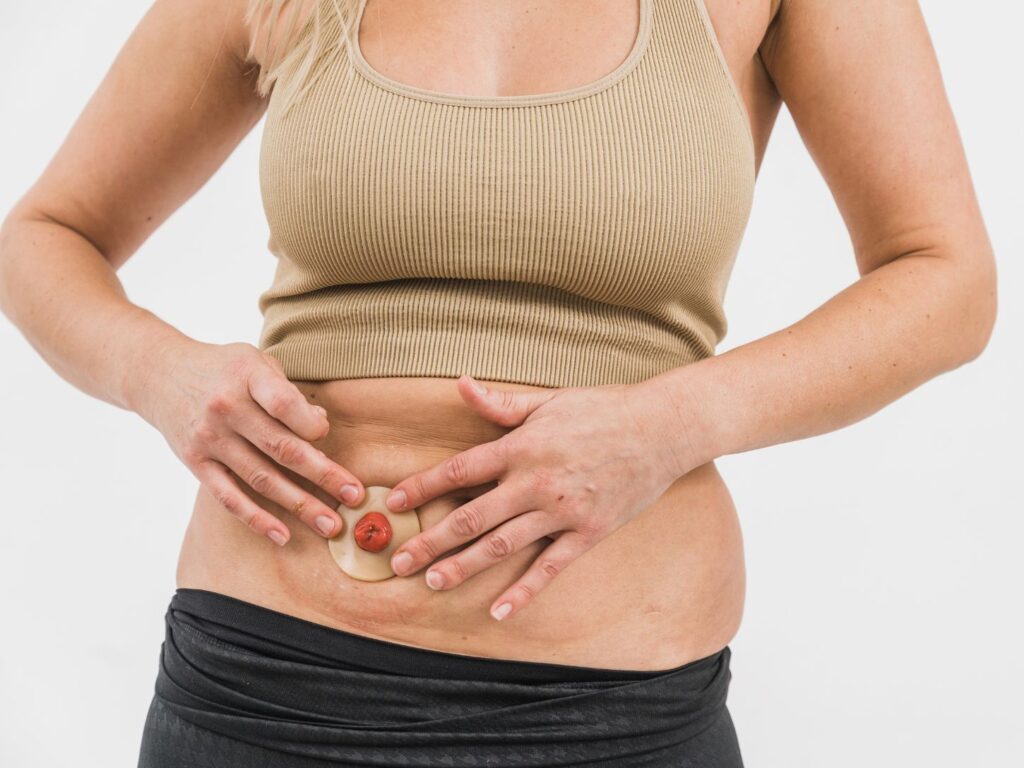
Flange extenders for extra security
Flange extenders are designed to be applied over the edges of your stoma pouch, preventing the edges of the pouch from lifting. They are a great product for active ostomates or anyone putting their pouch to the test.
At CliniMed, we offer two types of flange extenders – HydroFrame and UltraFrame. Both can be sampled for free.
View the video transcript +–
Flange extenders are adhesive strips that are applied over the edges of your stoma pouch. They help to secure the pouch more firmly, particularly around the flange – also called the baseplate – which is the area most prone to lifting.
By reinforcing these edges, flange extenders help reduce the risk of lifting and leaks and can increase pouch wear time.
Flange extenders may be useful if you:
• Have a hernia or uneven abdomen
• Are very active and put extra strain on your pouch
• When you’re on holiday or in hot weather
• Have issues with your flange lifting or leaking
Or simply want added confidence in your pouch’s security.
Some people use flange extenders every day, while others might only use them for certain activities like swimming, running or sports.
Flange extenders come in different shapes, sizes, and materials to suit your needs. Here are some examples:
• Hydrocolloid extenders, like HydroFrame, are thicker and provide a strong, skin-friendly adhesive
• Ultra-thin film extenders, like UltraFrame, are discreet and ideal for active lifestyles
You can also choose smaller, mini extenders to support sensitive or smaller areas.
HydroFrame flange extenders are made with Manuka honey-infused hydrocolloid, which is gentle on skin and made from food-grade ingredients.
They provide excellent adhesion and are ideal for extending the wear time of your pouch, particularly during gardening, exercise or everyday movement.
They’re available in regular and mini sizes depending on your needs.
Step-by-Step Application
- Take one HydroFrame flange extender out of the pack
- Remove the top half of the release liner
- Place it over the flange, making sure at least 1cm covers the edge of the flange and the rest sticks to your skin
- Press down gently, then remove the second half of the liner and apply pressure to secure
- Repeat on the other side if needed
To remove, spray a small amount of medical adhesive remover at the top of the extender and gently peel away from the skin before removing your pouch.
UltraFrame flange extenders are the thinnest and most discreet option available. They’re waterproof, breathable and blend seamlessly with your skin—perfect for swimming, bathing or exercise.
UltraFrame is gentle on the skin and easy to remove, leaving no residue behind.
Step-by-Step Application
- Remove an UltraFrame flange extender from the pack
- Peel back the part of the liner marked 1 and position the extender over the edge of the flange, so part covers the flange and part touches the skin
- Press down on the centre to adhere this section
- Peel back liner 2 at the bottom and press into place
- Peel back liner 3 at the top and press into place
- Remove the final protective layer marked 4, starting with the top half, then the bottom half
- Repeat on the other side with the next extender
To remove, grab the release tab and gently pull outwards. This lifts the extender away from the skin easily and leaves just a small piece of material to dispose of.
Whether you need more security every day, or just during certain activities, flange extenders can give you added confidence and comfort.
From thicker hydrocolloid options to ultra-thin breathable film, there’s a solution to suit your body, your skin, and your lifestyle.
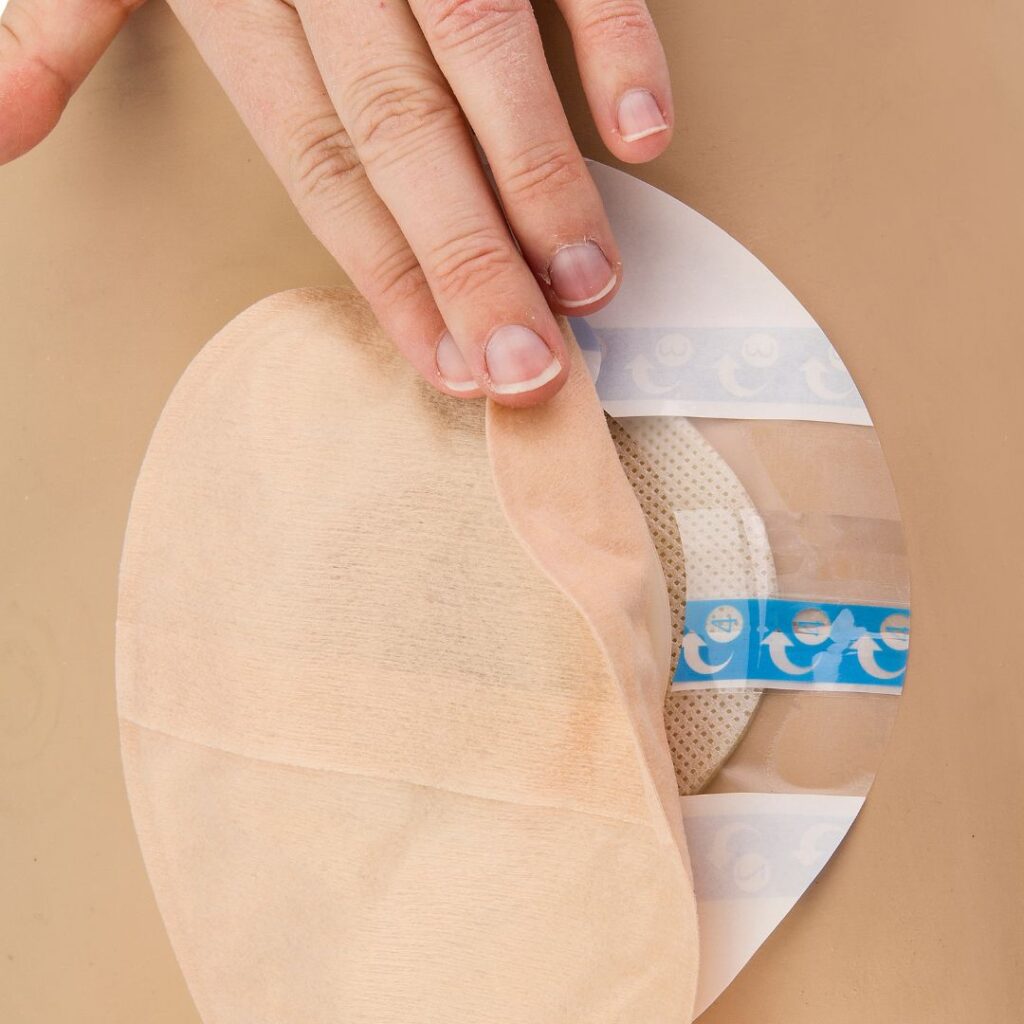
Stoma-friendly sleeping positions
It is important to find a sleeping position that is comfortable without restricting your stoma bag – and it can be a challenge. One commonly asked question is “Can I sleep on my stomach with a stoma?“.
Sleeping on your stomach is generally not recommended due to the risk of pressure on the stoma and pouch, which can lead to leaks. Some people may start the night sleeping on their stomach, but as your pouch fills, the risk of leakage increases.
It is generally safer to sleep on your back or side, and to take precautions like emptying your pouch before bed and using pillows for support to prevent leaks.
Over time you will start to understand what works for you when it comes to sleeping with your stoma bag. Test different positions to see what makes the biggest impact to your sleep, and sleep quality.
Night-time routines
Creating a night-time routine can help you wind down in the evening and get better quality sleep.
We have pulled together five tips to try:
Build a schedule – Set a time to wake up and go to bed to create consistency.
Limit screen time – Aim for around 60 minutes away from a screen before you go bed. Reading a book is a popular alternative.
Avoid caffeine before sleep – You can still enjoy caffeinated drinks during the day, but try to avoid them in the few hours before you go to bed.
Have a shower or bath – This will help create consistency in your evening routine and can contribute to better quality sleep.
Make sure your bedroom is comfortable – Consider things like noise, temperature and light in your bedroom. All of these can impact your sleep quality.

Mental health and sleep quality
Experiencing quality sleep and having good mental health are closely linked. When one is impacted, the other will be impacted too. Taking steps to try and improve your mental health and sleep-related anxieties may help you get better sleep.
We have teamed up with Dr Zainab Noor, Clinical Psychologist to get her tips for restful sleep after stoma surgery.
This article explores why sleep can feel so fragile after stoma surgery and offers ways to ease the fear of your stoma bag leaking, rebuild a sense of safety, and support your body’s return to rest.
Designed for security and comfort
Related resources
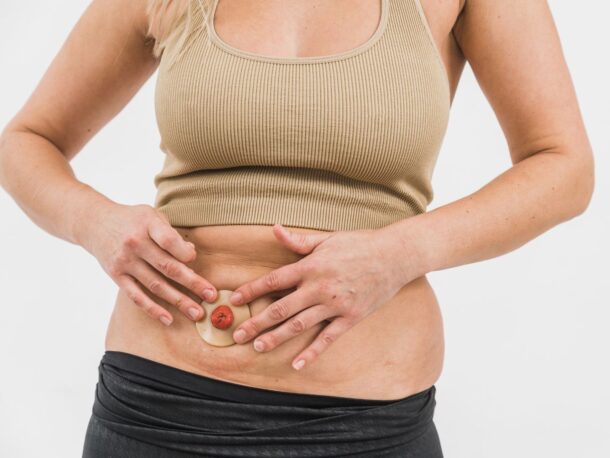
Stoma bag customisation
Learn how to measure your stoma and cut your stoma pouch to achieve the best possible fit.
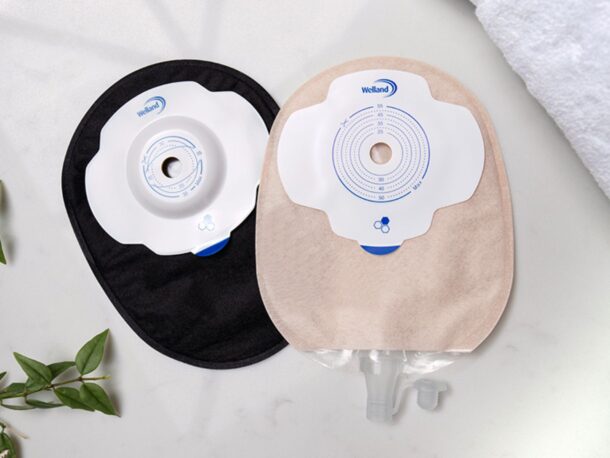
How to choose the right stoma bag
There are a wide variety of stoma bags available, find out which one could work for you.
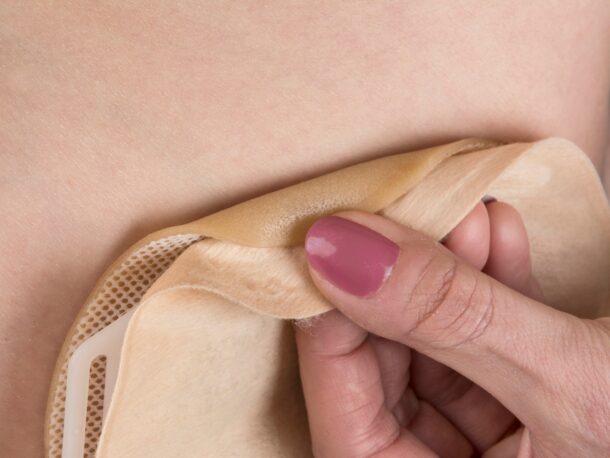
How to change a stoma bag
Find out how to change a stoma bag and what you’ll need to do so with this step-by-step guide.

Living with a stoma
From diet to relationships find information and advice about living to the fullest with a stoma.
